At SILVERON, we recognize that addressing water challenges with short-term, day-to-day solutions is no longer sufficient, especially in the Indian context. There is an urgent need for a long-term vision, strategic planning, and the implementation of sustainable solutions that can increase the availability of fresh water and establish reliable supply lines to meet the growing demand for water across all sectors.
Our approach at SILVERON goes beyond tackling routine, site-specific issues. We aim to provide solutions that benefit a broad section of society. For years, we have been pioneering innovative systems across various locations in India to artificially replenish groundwater aquifers and safeguard the environment.
Flooding is a common and damaging occurrence that causes widespread economic loss to property and standing crops in many affected areas each year.
Through this blog, we aim to share our insights and expertise in clear, accessible language, avoiding unnecessary complexities. We would like to express our sincere gratitude to Saraswati Sugar Mills Ltd, Yamuna Nagar, for their trust and support in ensuring the success of this project.
Case Study:
Mitigating Flood Impacts on Haryana’s Paddy and Sugarcane Crops: Rain Water Harvesting Strategies for Lowland Areas Near Himachal Pradesh
Here are some photographs taken by our team in July & August 2023 of crop damage due to water logging.
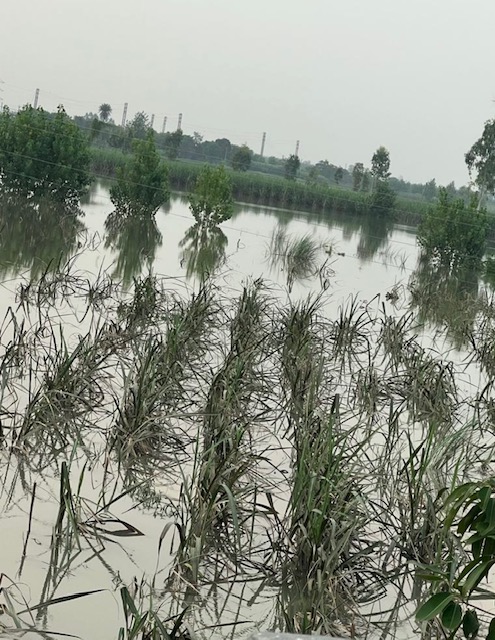
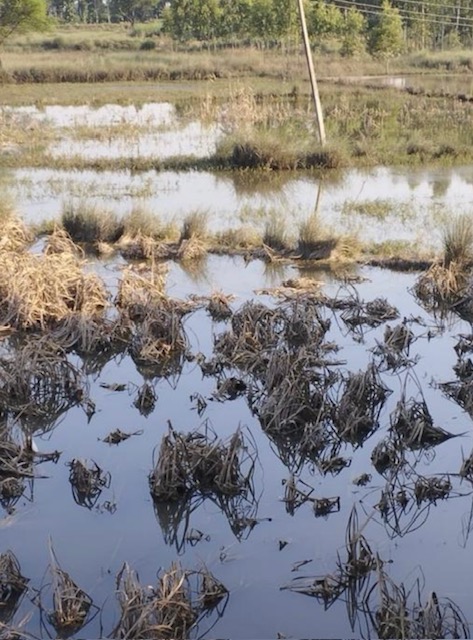
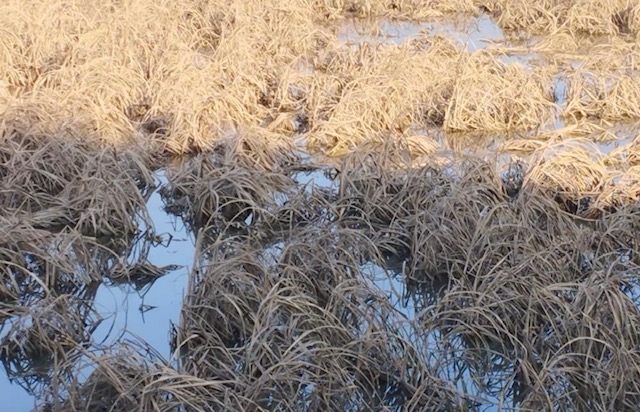
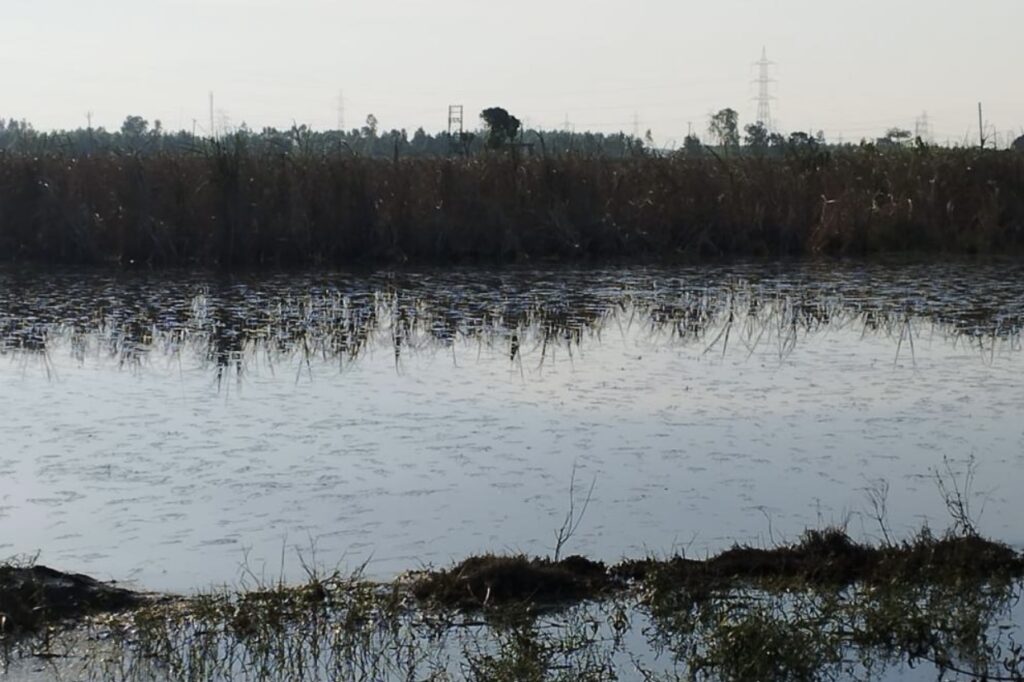
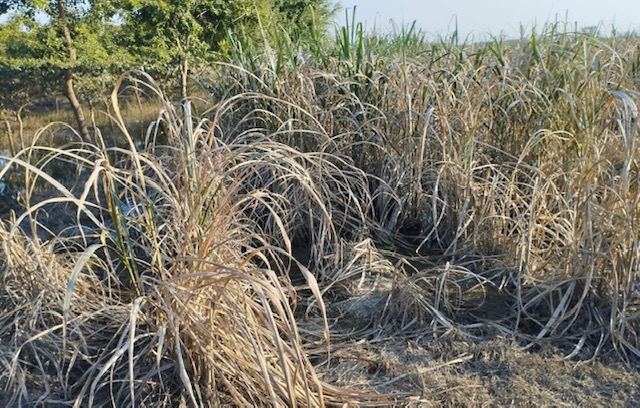
The paddy and sugarcane fields downstream in this region have persistently suffered from flooding and water logging nearly every year, particularly during heavy monsoon rains. This flooding causes significant crop damage, leading to substantial financial losses for farmers.
Several factors exacerbate this issue:
- Low-Lying Terrain: Paddy fields, often situated in low-lying areas, naturally retain water—a necessity for rice cultivation. However, during heavy rainfall, the flat design of these fields, along with the surrounding bunds (embankments), causes rapid inundation and flooding.
- High Water-Requirement Crops: Paddy and sugarcane are water-intensive crops. Paddy fields are typically saturated with standing water, and any additional rainfall overwhelms the soil’s capacity to absorb water, leading to surface water accumulation and flooding.
- Poor Drainage: The clay-heavy soils common to these fields have low permeability, which prevents water from percolating quickly into the ground. This issue is compounded by surface runoff and the emergence of subsurface water from the upstream regions of Himachal Pradesh. The combination of these factors and inadequate drainage systems intensifies flooding, especially during prolonged or heavy rainfall.
- Soil Compaction: The continuous cultivation of these crops results in soil compaction, which reduces the soil’s ability to absorb water. Compacted soils lack sufficient air pockets, causing increased surface runoff during rainfall.
- Monoculture Practices: The repeated cultivation of the same crops degrades the soil structure over time. This degradation diminishes the soil’s ability to manage large amounts of water, making flooding more severe during heavy rains
Our Intervention:
In September 2023, we initiated our study in targeted waterlogged area and identified several factors contributing to the flooding. Many factors, such as the compact, low-permeability soil and a reduced gradient toward downstream areas, were beyond our control. However, we recognized that two primary factors—surface water flow and the emergence of subsurface water—were largely responsible for the flooding, which led to water logging, high soil salinity, and crop damage. Fortunately, we had the ability to mitigate these factors, and we were confident that our unlined recharge shaft design provided an effective solution
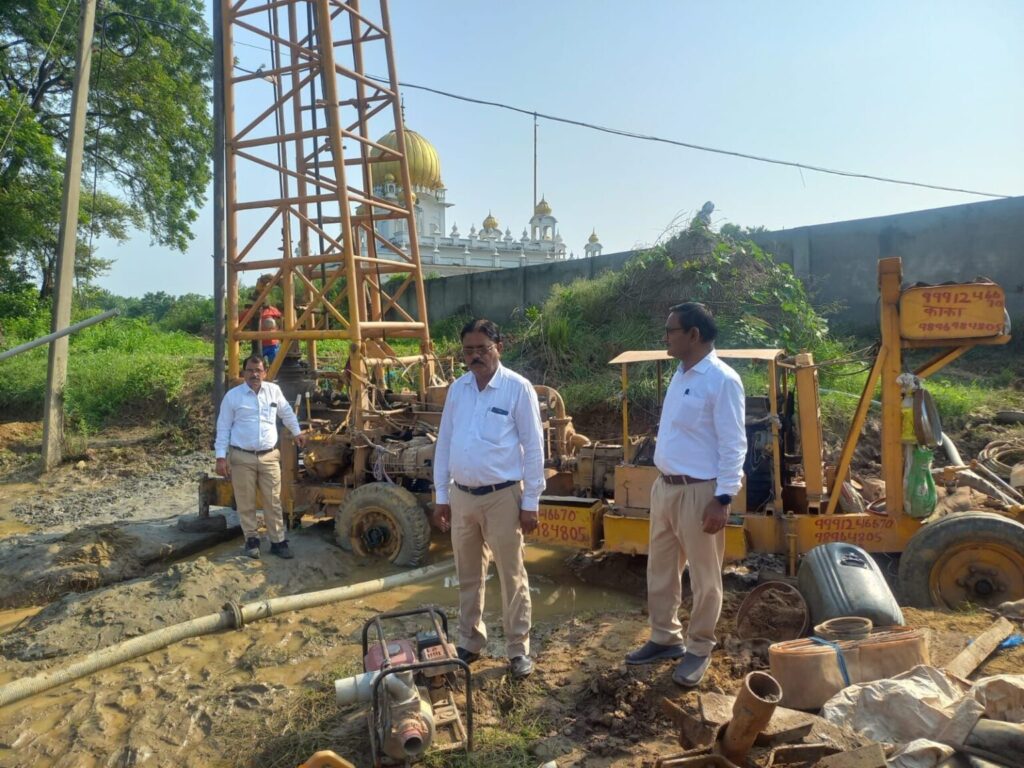
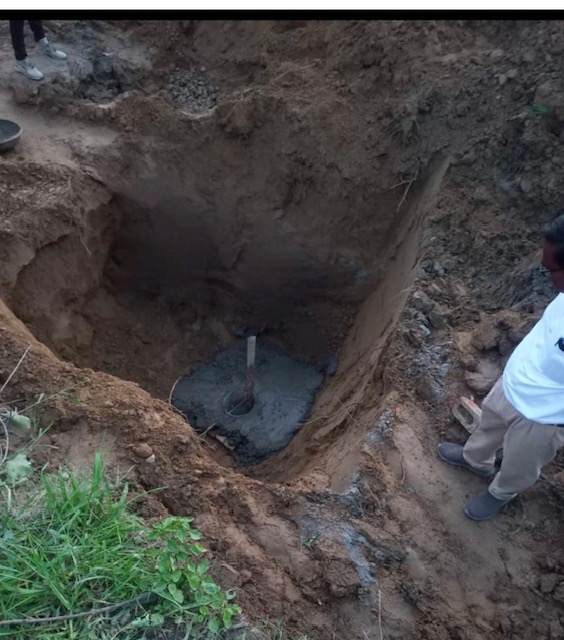
Our primary goal was to intercept slow surface runoff and prevent the emergence of subsurface water by creating an easier pathway for water to flow to deeper depths. We recognized that recharging water deeper into the ground would effectively regulate upper aquifer levels, reduce the risk of flooding, and enhance soil stability. Together, these actions are critical for agricultural fields, where excess water can cause significant environmental and economic damage.
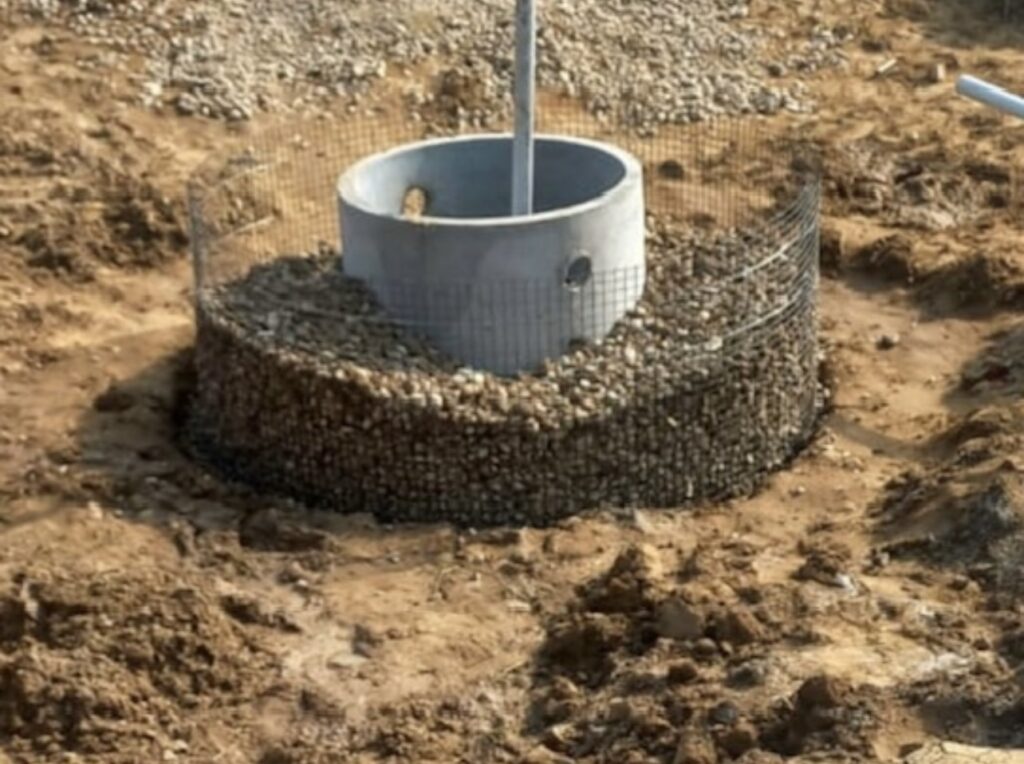
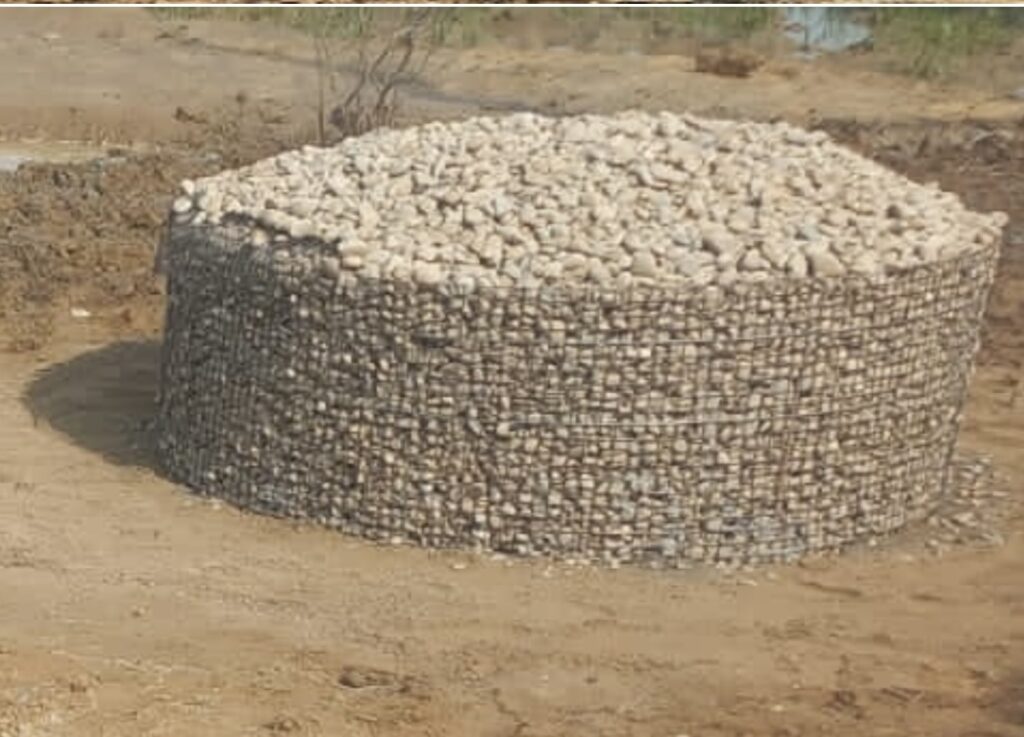
The installation of unlined recharge shafts, designed and developed by our founder Sunil Sharma, stands out as the most effective solution for such conditions. Over the years, this design has proven to be a highly effective tool for sustainable water management across all types of terrain, particularly in areas with slow-infiltration soils like clay or silt.
The unique unlined design of our rain water harvesting systems encourages deeper water movement, bypassing less permeable layers—an advantage over conventional slotted pipe systems, which often struggle in these conditions.
SILVERON’s unlined recharge shafts allow water to directly infiltrate the ground, offering a significantly higher infiltration capacity without clogging.
Despite minimal local rainfall, our recharge structures in downstream Haryana farms were unexpectedly submerged under 4 feet of water in August 2024. This clearly demonstrates the significant impact of heavy upstream rains in Himachal Pradesh on subsurface water flow, even in areas with little surface runoff.
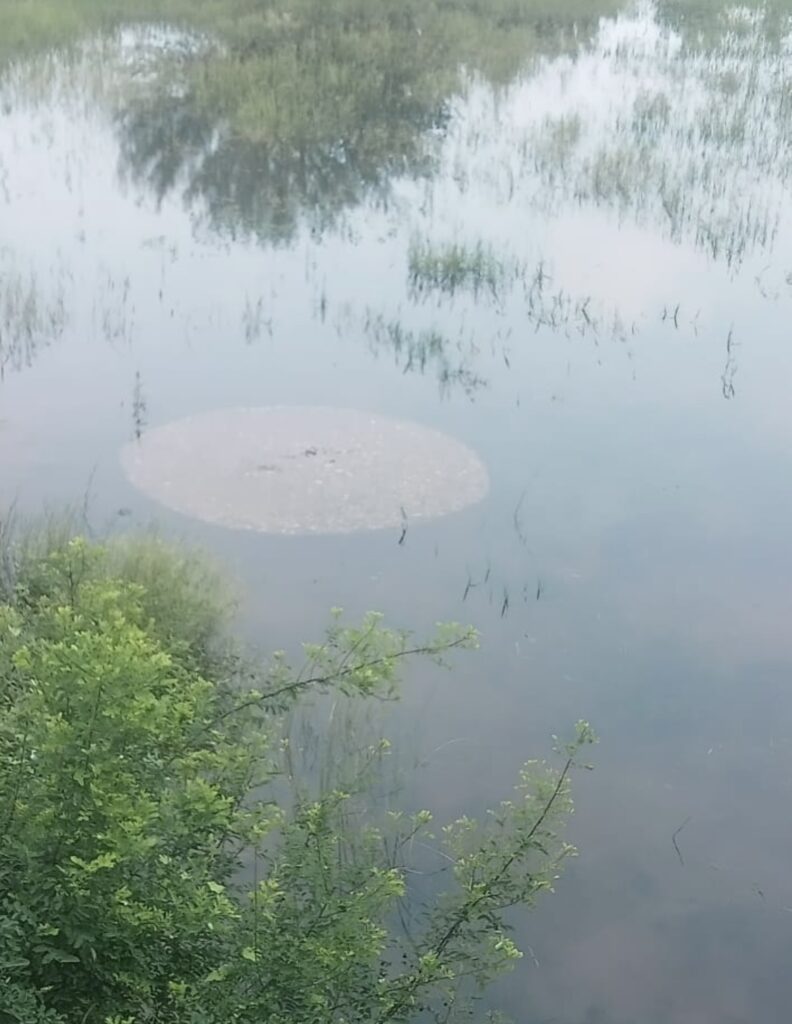
Promising Results
SILVERON’s unlined recharge shafts deliver superior infiltration efficiency, adaptability, and sustainability. These innovative structures leverage natural forces—gravity, soil gradients, and transmissibility—to rapidly channel rainwater into the ground. This accelerates groundwater movement across extensive areas, significantly boosting soil moisture levels. As a result, farmers experience markedly improved crop growth and increased yields.
Here are some videos and photographs taken by our team in August 2024 at the same locations showing the dramatic positive turnaround in soil health in agricultural fields installed with Silveron Rain Water Harvesting shafts.
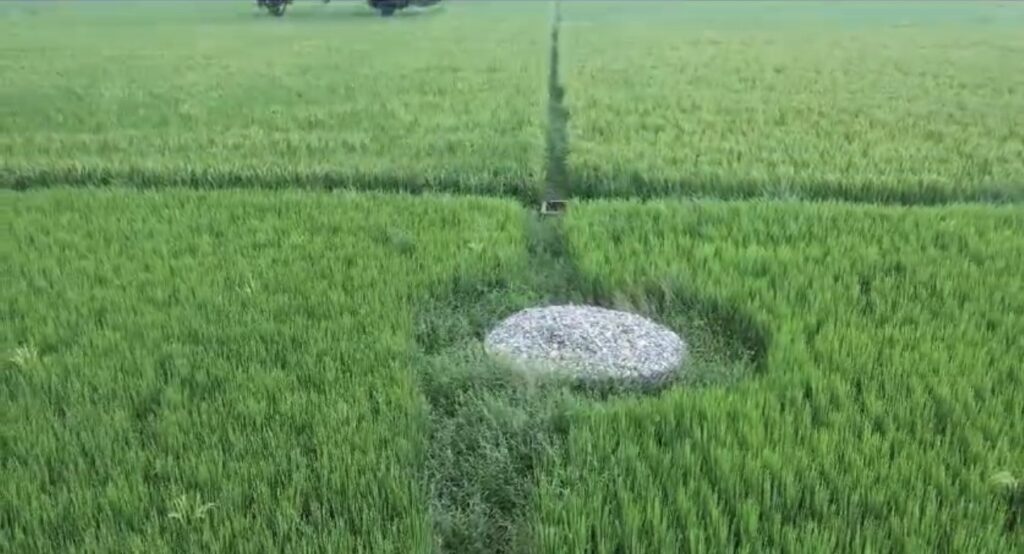
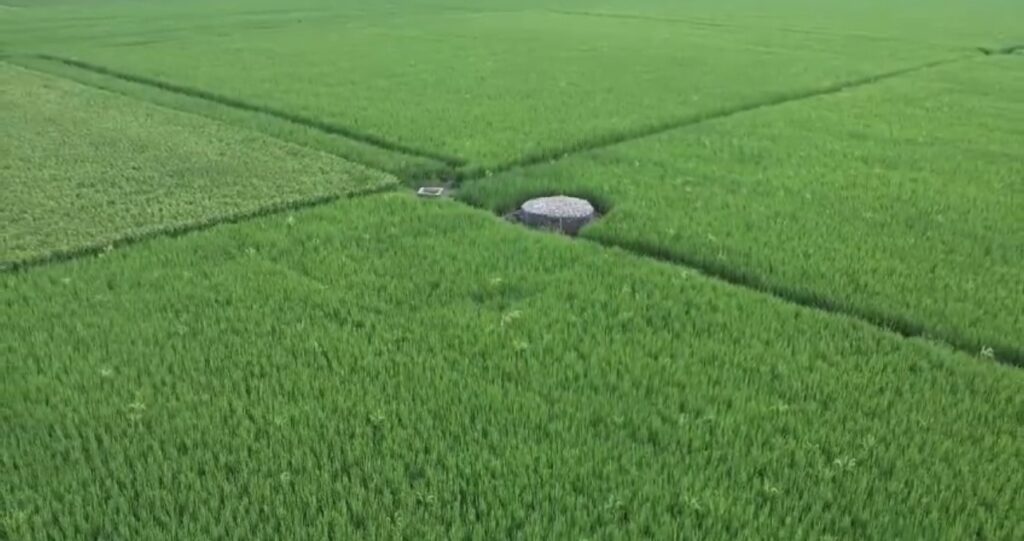
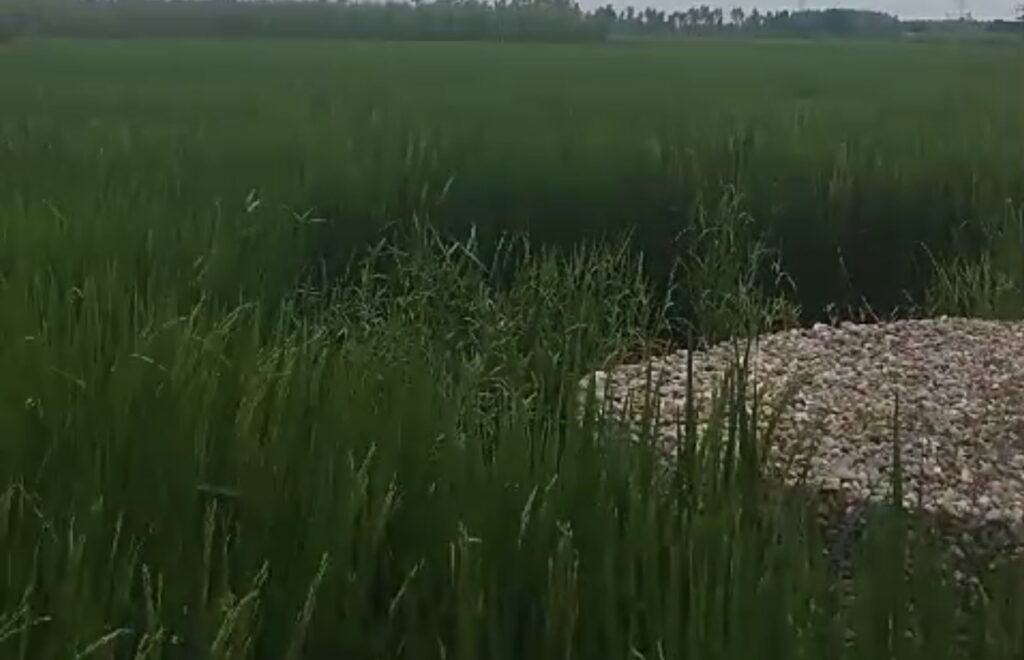
The smiles on the farmers’ faces and the joy in their eyes are a strong testament to the success of our efforts.
Impactful rain water harvesting being exhibited from the house of Silveron, a name we have been hearing as one of the true rain water harvesting organisations in the country. Kudos to the dedicated team at Silveron being led by a visionary Shri Sunil Sharma Ji. His efforts and hard work are creating a new rainwater-tech platform, if adopted in the nook and corners of India can not only add to the water table but can positively impact our environment and the Indian economy. Congratulations and a worth read for all.
आप द्वारा किया जा रहा सराहनीय काम समाज के लिए एक अद्भुत तोहफा है आने वाली जनरेशन को आपका यह तोहफा अद्भुत रहेगा।
आप द्वारा व्यवसाय के साथ-साथ इस तरह से समाज की सेवा करना भी सराहनीय है।
इस तरह का कार्य वैज्ञानिक दृष्टिकोण रखने वाला व्यक्ति ही कर सकता है अद्भुत।
Really innovative and lived with values that has been created by Sunil Sir.
There is endless potential in Team Silveron when we talk about the innovation and excellence.
Really Sir you and your team is doing excellent working in the field of water conservation and water harvesting.u always comes with New inovative ideas.great job for ecological environment.my best wishes for whole teams.
This is possible only in the areas where there is no clay /gypsum /impermeable layer beneath the bottom of the shaft.
These impermeable layers are mostly found in alluvial areas. The hydraulic conductivity of these layers is very low and does not allow water to percolate downward, that is the main reason of impounded water in the Western Rajasthan at many places such as Kavas ,lunkaransar etc.
The biggest challenge is to get rid of all this and utilise the excessive rain for recharging the groundwater in these type of terrains.
Any way, your efforts are appreciable and absolutely applicable in shallow or no hard pan areas.
Wishing you all the best and success in all your endeavours.
Excellent work done ! Much needed during this time of climate change. Wishing you and your team success in this work beneficial to society
Extremely innovative complete solution
Incredible work! Nothing can give us more joy than to see the smiles on peoples faces. Wish you all the best for your future projects.
“Thank you for this insightful and inspiring article on innovative rainwater harvesting in flood-prone areas. It’s incredible to see how sustainable solutions like these can not only mitigate the risks of flooding but also conserve water for future use. The detailed explanation of the techniques and their positive impact on local communities truly highlights the potential of such initiatives. This is a valuable resource for anyone looking to implement eco-friendly water management practices. Keep up the great work in spreading awareness about these crucial environmental strategies!”
That’s an impressive initiative! Your commitment to innovative rainwater harvesting in flood-prone areas is not only inspiring but also crucial for sustainable water management. I look forward to seeing the positive impact this project will have and the growth it will foster in the community.
Sunil Ji Excellent Work, your passion and commitment has really helped many in getting rid of their water logging problems and most inspiring is by returning the water to mother earth.
This particular project is out of the box, I am sure the farmers will be relieved of the pain they undergo post monsoon.
Salute to you